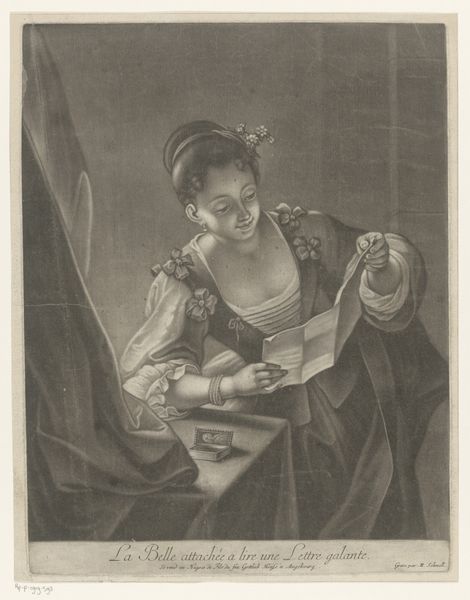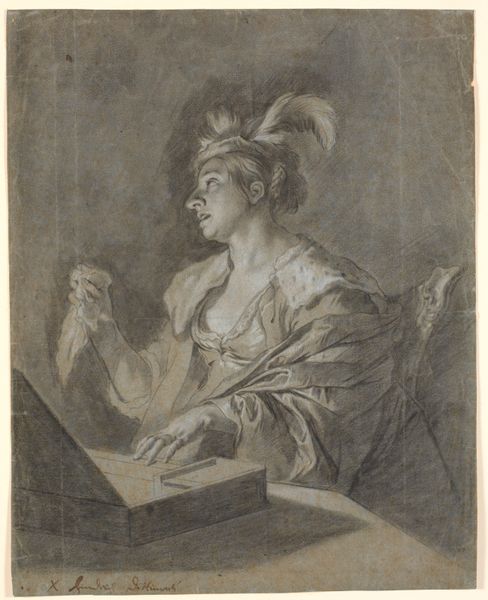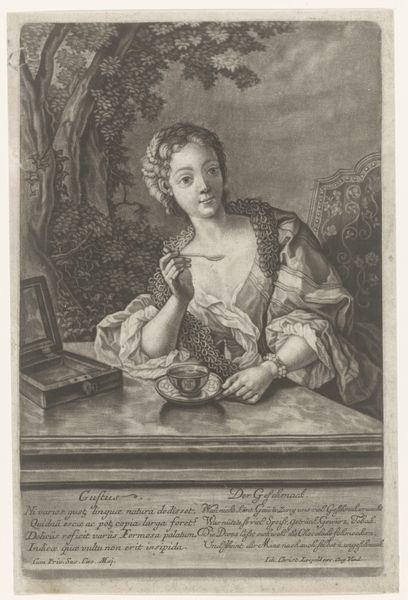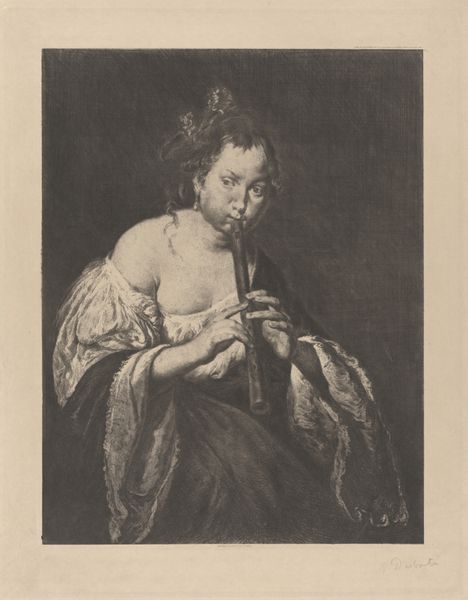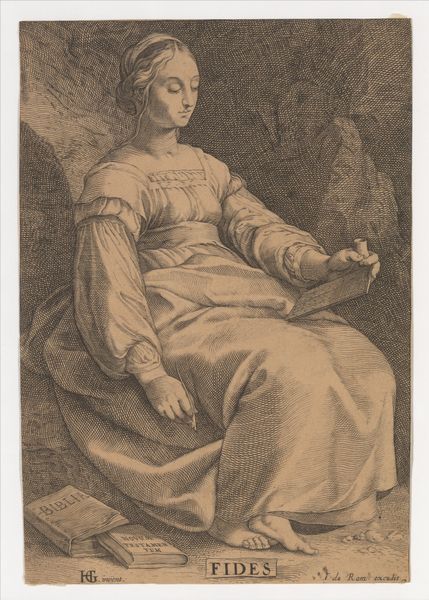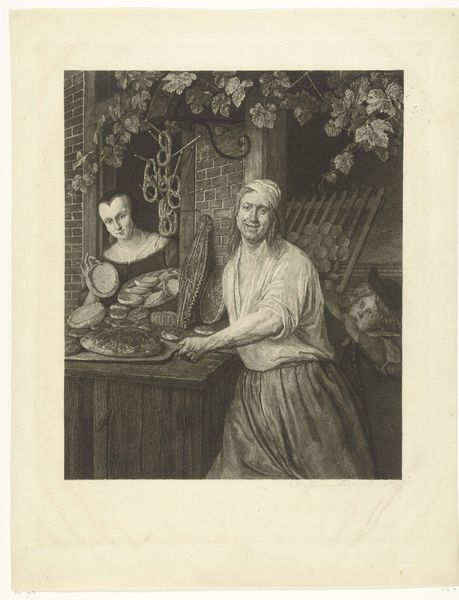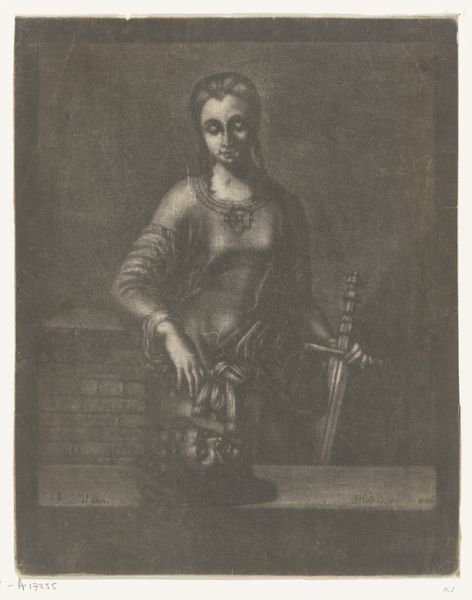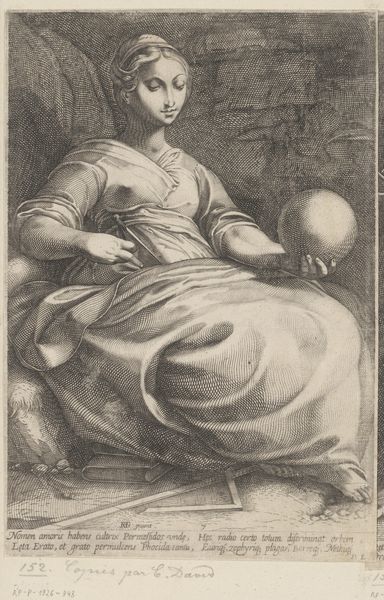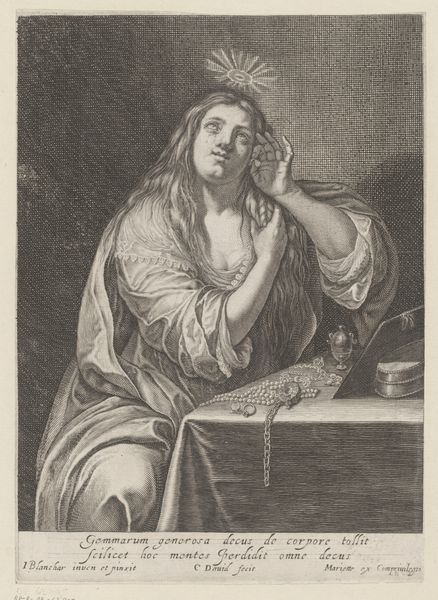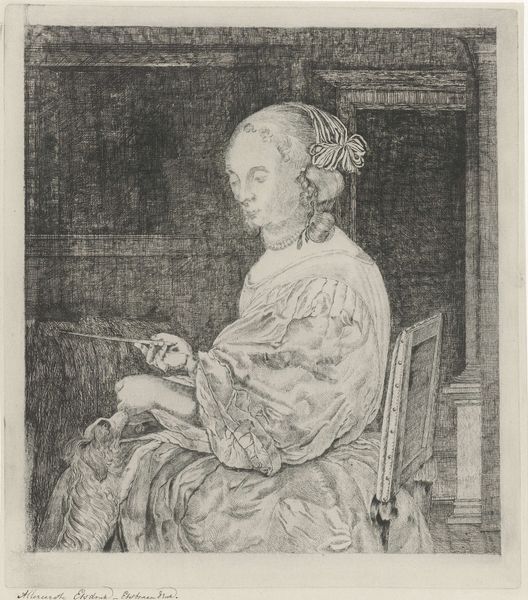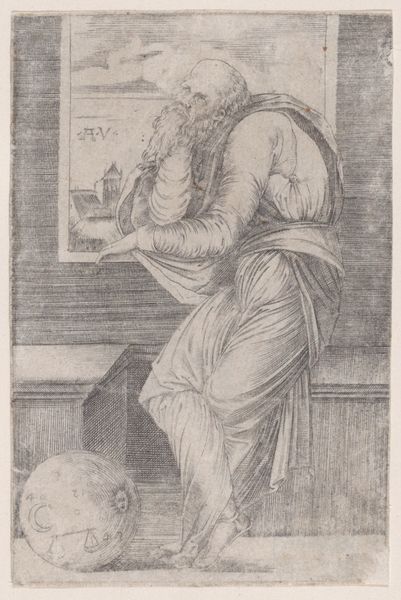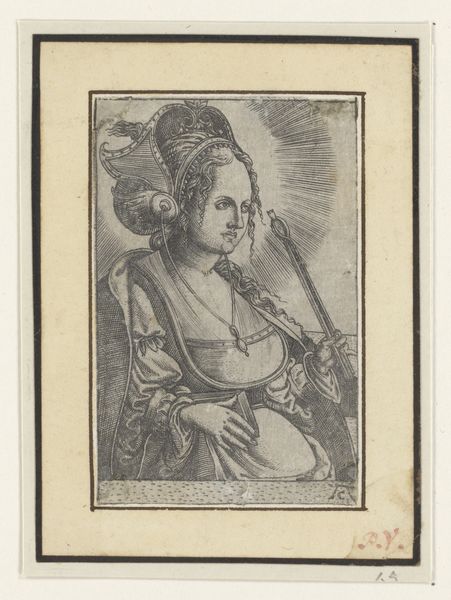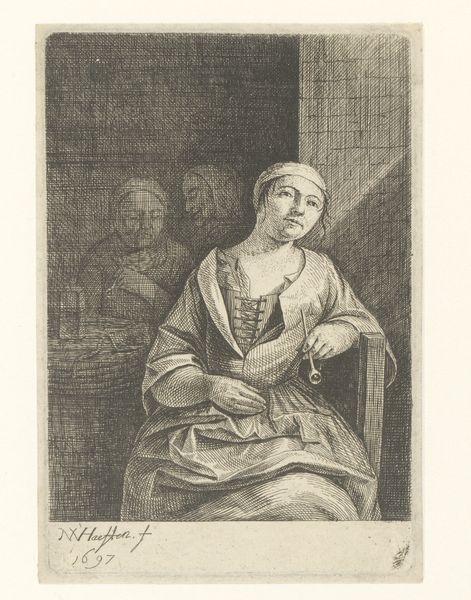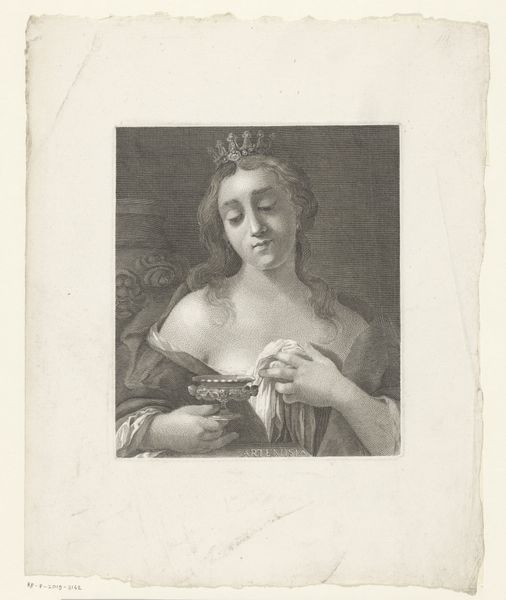
drawing, pencil
#
portrait
#
pencil drawn
#
drawing
#
baroque
#
charcoal drawing
#
pencil drawing
#
pencil
#
portrait drawing
#
pencil work
Dimensions: height 215 mm, width 148 mm
Copyright: Rijks Museum: Open Domain
Curator: Welcome. We're standing before a work titled "Meisje met spiegel in de hand"—or, "Girl with mirror in her hand"—created sometime between 1649 and 1710. It is a drawing currently held here at the Rijksmuseum. Editor: There's a subdued elegance to it. The hatching technique used in the pencil and charcoal feels almost delicate despite the baroque style. The woman has a rather stern gaze, reflecting a world beyond the surface. Curator: Indeed, the artist skillfully employs both pencil and charcoal to build up layers of tone, focusing on the play of light and shadow to give form to her features and clothing. Semiotics can suggest the mirror implies reflection and vanity, popular themes during the Baroque period. Editor: I’m struck by the materials available to the artist. Pencils, charcoal, and the reflective surface itself would be precious items. A lady adorned in a ruffled shawl using precious items conveys status; it brings me to wonder if we could uncover any economic data tied to sumptuary laws of the time for this work? Curator: Perhaps. Beyond that, her direct gaze forces us to confront her as an individual, complicating the typical vanitas reading. It’s in her expression. What would you call that emotional tone, exactly? Editor: Certainly an air of contemplation. But the materiality itself—the deliberate, skilled handling of rather common materials to portray this elite status—reveals, perhaps unconsciously, the economic strata inherent in its creation and representation. Curator: That focus is quite compelling, yes, though it leads us back to the drawing’s purpose in itself, doesn’t it? Are we meant to view her with judgment or empathy through this semiotic layering? Editor: It’s in this deliberate application, this tension between presentation and societal expectation, where this portrait’s strength lies for me. Perhaps she feels she should present in a certain way, or perhaps the artist feels she does. Curator: I concede that your material perspective deepens our interaction with it. I see how your point of view moves us past mere aesthetics to explore this work's making within its cultural moment. Editor: And you’ve helped illuminate her presentation and mood so well by way of your attention to detail! Curator: Exactly. I now have more insight. I’m happy to continue on our tour.
Comments
No comments
Be the first to comment and join the conversation on the ultimate creative platform.
